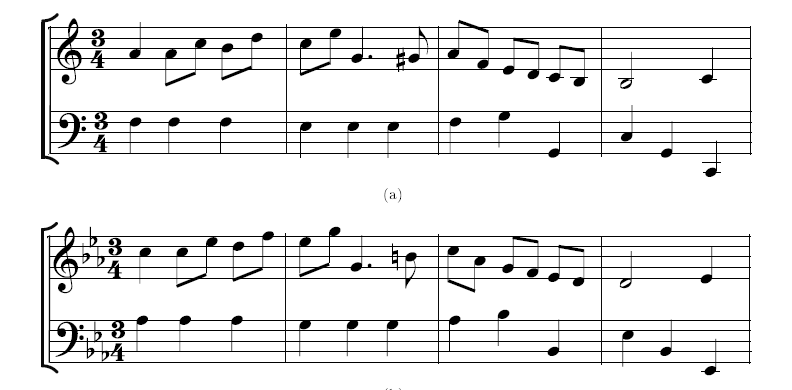Transposition can also make music easier to play for instrumentalists, and ease of playing generally translates into more satisfying performances. For example, transcriptions for band of orchestral works sometimes change the (often sharp) orchestral key to a nearby key with more flats. A guitar player, given a piece written in A flat for keyboard, will often prefer to play it in A or G, since the fingerings for chords in those keys are easier. Also, instrumentalists, like vocalists, have ranges that need to be considered.
Example
Your eighth grade bassoon player would like to play a Mozart minuet at a school talent show with a flute-playing friend from band. The minuet is in C, but the melody is a little too low for a
flute, and the bassoonist would also be more comfortable playing higher. If you transpose the whole piece up a minor third to E flat major, both players can hit the lowest notes, and you may
also find that fingerings and tunings are better in the flat key.

Exercise 6.5:
You've brought your guitar and your capo to the sing-along because you'd like to play along, too. Going through the music beforehand, you notice that your favorite song is in A flat. The pianist isn't prepared to play it in any other key, but you really don't like those thin-sounding chords in A flat. You can use your capo to raise the sound of your instrument (basically turning it into a transposing instrument in C sharp, D, D sharp, or even higher), but the less you raise it the more likely you are to still sound in tune with the piano.

- 4233 reads






